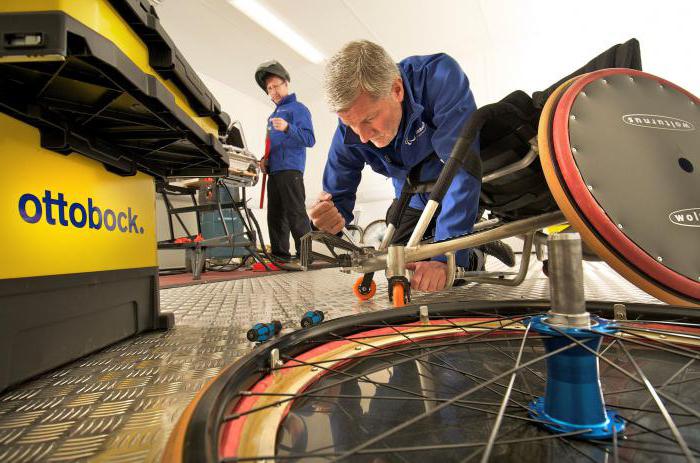Not everyone understands how important it is to develop technical specifications correctly, but in fact it is such a broad question that it will not work in a nutshell. For this reason, before proceeding with this procedure, you need to understand all the relevant subtleties.
What is this for?

Before discussing how to correctly develop technical specifications, you need to understand why this is done and by whom it will subsequently be used, because the necessary approach to carrying out this procedure depends quite strongly on this. It is worth noting a few basic options:
- A commercial organization intends to introduce a fully automated system, but it does not have its own IT service, as a result of which it decided to do the following: a certain interested person develops technical tasks, and then gives them to third-party organizations for further development.
- A commercial company is going to use an automated system, and it has a working IT-service. In this situation, TK is developed, after which it is negotiated in detail with the IT service and then sent to interested parties, and ultimately, it is sold on its own.
- The government is about to complete a specific IT project. A lot of subtleties and pitfalls, including all kinds of formalities, are already surfacing here, so it is not even advisable to consider this option, since each individual case most often requires a completely individual approach.
More complex cases
The most difficult case is when technical specifications are developed by an IT company for the subsequent development and implementation of automated systems. In such situations, you have to work in a wide variety of conditions, such as:
- The client’s presence of his own specialists with his own vision of this process, which impose certain requirements on the compiled TOR.
- Technical specifications are created exclusively for their own developers, and the client, in principle, is not so important what the result will be.
- TK will be transferred to the contractor, that is, to a certain group of specialists who are located outside the company’s staff.
- There is a misunderstanding between the company and the client regarding the result, so the company does not know how to correctly develop technical specifications for maintenance.
There are many other situations that also need to be considered, but only the most frequent are indicated above.
What is TK?

There are a fairly large number of GOSTs and certain standards that are designed to regulate each area of activity. In particular, such standards must be taken into account when developing technical specifications for maintenance. At the same time, there may be active debate about how relevant these documents are, but in any case, in the process of developing your own project, you need to fully comply with them. In fact, one must correctly understand that GOSTs most often do not reveal the practical problems of modern development, but at the same time they do not always propose a specific and systemic alternative.
TK in itself is a source document governing the design of a technical facility.It establishes the main purpose of this development, as well as various tactical and technical characteristics, quality indicators and all kinds of technical and economic requirements, and also indicates special requirements that must be taken into account during the work. The task as a source document to create some new things exists in every modern field of activity, but it can vary, depending on the content, the order of design and a number of other parameters.
Features of use
It is quite natural that the requirements in GOST are clearly not enough so that in the end everyone can create an effective example of a technical task, and this is quite normal, because not everyone can do the job in full accordance with the standards. In addition to GOST itself, certain methods and practices must also be taken into account, and this fact is at the root of this problem.
Many experts, for some reason, developing technical specifications for the design of an object or carrying out certain works, are based solely on the requirements of GOST, but in reality this is fundamentally the wrong approach.
the main task
As follows from the definition itself, the main purpose of TK is to formulate the basic requirements for the developed object. In this case, one must correctly understand that we are talking about the basic requirements, but not the only ones.
How to determine the requirements?

First of all, you must remember that the terms of reference for design or development should include requirements that are divided by properties and types. In this, in fact, GOST helps us the most. The list that can be found there is an excellent example of what types of them will need to be considered, namely:
- functionality;
- security and access rights;
- staff qualifications.
What to pay attention to?

Of course, this is not a complete list. However, the key factor that should be distinguished by a successful example of the technical task is the correctly formulated requirements for functionality, and it is to these requirements that the professionals devote the overwhelming majority of methods and works. Many experts say that the requirements for functionality include about 90% of the total complexity of work related to the development of technical specifications, and everything else is a kind of “camouflage”, which will then be worn on these requirements.
If the requirements are formed incorrectly, then, no matter how beautiful you put camouflage on them, in the end it will not work to make a really successful project. Of course, according to GOST, all requirements are fully met, the terms of reference (sample below) are developed, signed and approved, and the specialist received payment for it, but then you need to understand what to do with this document. If we are talking about a project for a state order, then often no problems arise, because there are much smaller budget constraints, and the main details will already be identified in the implementation process. But if we talk about commercial organizations, where they consider money in more detail and require a different result, then everything is already more complicated.
Useful and effective development

If the types of requirements can be very different, and here everything mainly depends solely on the goals of the project, then there are only three properties:
- understandability;
- specificity;
- testability.
At the same time, one must correctly understand that, when developing a technical task, a sample must be tested correctly, and this already depends on the first two properties.If the result of fulfilling one or another requirement cannot be tested, then this indicates that this requirement is either not fully understood or not specific, and you need to think about it, because it is in the ownership of these properties of the requirements that the developer’s professionalism and skill lie, and therefore, experienced specialists perform such work much faster and better.
Additional nuances
There are also a few important points that must be taken into account when developing a technical task. The requirements system is as follows:
- What language (from the point of view of complexity of perception) should it be written?
- Is it necessary to describe in it any specific features of various functions, algorithms, types of necessary information and other technical subtleties?
- What is technical design, which, by the way, is noted in existing state standard specifications, and how does it relate to the compiled technical specifications?
The answers to all these questions are quite important, and precisely for this reason, many often start to argue about how sufficient the drafted TOR is and whether it contains all the necessary details of the requirements. Among other things, it is also important how understandable this document will be from the point of view of the customer and the contractor, how redundant it is and what the presentation format is.
Task and project

TK is a document that includes various requirements that are formulated in a language that is extremely understandable for the customer and for the contractor. Moreover, if a professional is developing a technical task, his services may also include the use of industry technology, which is designed to provide the most understandable wording for the final contractor. It is important to remember here that it is necessary to avoid any bindings to the specifics of technical implementation, that is, in the process of developing TK, in principle, it does not matter on which specific platform the implementation of all these requirements will be implemented. Of course, there are certain exceptions, but these are special cases.
The clarification and further formulation of the various requirements, as well as the final development of the ToR, should already be done by a specialized business analyst, and not by the executor (unless, of course, he combines these roles in himself, which happens periodically). In other words, the specialist must communicate with the customer in the language of the business that he conducts.
Differences of the project from the task
Creating a technical task from a project is different in that the latter is a document that includes the basic requirements for how the requirements specified in the ToR should be implemented. This document includes the main subtleties of the implemented product and the necessary elements that will be used in the work by technical specialists.
It is not necessary for the customer to delve into such work, because the overwhelming majority of requirements may not even be clear to him. Often, the implementation of a technical project is carried out by a specific specialist, therefore, it is already quite possible to combine this role with the performer. At the same time, you need to understand that the larger the project is, the more people are developing the technical specifications.
What is the practice?

It often happens that the director is brought to the coordination of TK, which includes a lot of technical terminology, as a result of which he tries to delve into this, trying to catch familiar words and not lose the main chain of business requirements. As a rule, in such situations, the technical task for work is still approved, implemented, and in most cases it turns out that the result does not correspond to the fact of the work performed, since a large number of nuances were decided to be changed, redone,and some elements were misunderstood, and many other problems arose.
That is why it is important to understand the difference between TK and the technical design, which is partly related to the competence of the relevant specialists, and partly to the desire to reduce the budget and time, since such documentation takes a lot of time.








